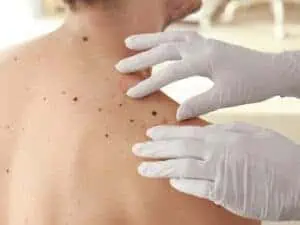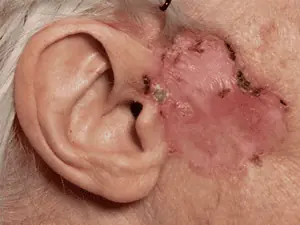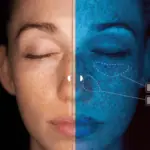Daylight Photodynamic Therapy
Home » Treatments » Daylight Photodynamic Therapy
Revitalise with Daylight Photodynamic Therapy
Not sure about your condition? Get in touch now, there is no reason for you to wait.
Award winning dermatology service, with over 20 years of experience
Short waiting lists, on some occasions offering same week appointments
Safe environment, in Care Quality Commission approved facilities
photodynamic therapy near me
Photodynamic Therapy (PTD) is a simple, non-invasive procedure that can be used to treat precancerous skin lesions. The treatment uses topical cream and light therapy to destroy cancerous and precancerous cells but doesn’t affect healthy tissue. Traditional photodynamic therapy uses artificial light as the light source, but this treatment can also take the form of daylight photodynamic therapy where natural sunlight is used.
This treatment is effective in treating non-melanoma skin cancers including Basal cell carcinoma (BCC) and Squamous cell carcinoma (SCC), as well as precancerous lesions such as Actinic Keratosis and Bowen’s disease.
HOW DOES DAYLIGHT PHOTODYNAMIC THERAPY WORK?
The treatment works by applying a topical cream, which is light sensitive, to the lesion and then using a light source, artificial or natural, to destroy any abnormal cells. On their own, both the cream and the light are harmless, but when exposed to light the cream causes a reaction that damages nearby cells.
During your procedure, sunscreen of an SPF of 30 or higher will be applied to the treatment area, which protects your skin. Your lesion is then prepared by cleaning the surrounding skin and removing any crusting. The topical cream will then be applied and will be left to fully absorb and build up in the abnormal cells. The light treatment will then begin which is either administered through a lamp or a laser for a short time, or you will be exposed to the daylight for a couple of hours.
The main side effect of the treatment is that you may experience mild tingling or pain in the treated area. This can be reduced by the use of a water spray to soothe any feelings of discomfort.
CONDITIONS PHOTODYNAMIC THERAPY TREATS:
- Squamous Cell Carcinoma
- Actinic Keratoses
- Basal Cell Carcinoma
- Blackheads (Comedones)
FREQUENTLY ASKED QUESTIONS
WHAT IS THE DIFFERENCE BETWEEN PHOTODYNAMIC THERAPY AND DAYLIGHT PHOTODYNAMIC THERAPY?
The only difference between these two treatments is the light source that is used. In Photodynamic Therapy, an artificial light in the form of a lamp or a laser is used. In Daylight Photodynamic Therapy, the light source is natural daylight.
HOW LONG DOES IT TAKE TO RECOVER FROM PHOTODYNAMIC THERAPY?
Most people can carry on with normal activities 24-48 hours after treatment. The key thing is to avoid direct sunlight during this time as you may be more sensitive to light. You will gradually become less sensitive to light and things will return to normal.
DO I NEED TO PREPARE FOR PHOTODYNAMIC THERAPY?
It is recommended that you cover up on your way home from the treatment to avoid sunlight as much as possible. If the treatment is on your face, it is a good idea to bring a hat, scarf or sunglasses. If the treatment is on your body, wear clothes which will cover any exposed skin.
HEAR FROM OUR PATIENTS
Start Your Journey With Us
Please fill in this form and one of our team will give you a call back to arrange a consultation with one of our expert dermatologists.
WHY HAVE PHOTODYNAMIC THERAPY AT THE HARLEY STREET DERMATOLOGY CLINIC?
Having the right dermatologist is important especially when you have a chronic skin condition that will require ongoing treatment. We want you to feel confident that we’re providing you with the best possible care. We also want you to feel as comfortable as possible with your dermatologist.
The Harley Street Dermatology Clinic specialises in conditions affecting the skin, hair and nails. Our goal is to provide all the care that you need when you’re experiencing these kinds of problems. We want to make it easy for you to access the best quality treatment and support in London.
The clinic is conveniently located in Central London, so it’s easy to visit us if you need to see a dermatologist. You will find yourself in a very comfortable and welcoming environment. We have created a relaxing space where you will receive the highest quality of care. We are regulated by the Care Quality Commission, are part of the British Association of Dermatologists and are top rated by patients of Doctify so you can be sure of safe and effective treatment with us.
INSIGHTS AND ADVICE

Ask The Expert: Sun Damage
WHAT DO I DO IF I BURN MY SKIN? Ideally, with the right high SPF sun cream and caution, sunburn can be avoided completely. However, in cases where sunburn happens, it is important to begin treating as soon as possible and get out of the

Worried about a mole?
A mole is a coloured spot on the skin which is made up of a cluster of cells known as melanocytes which are responsible for producing the pigment in your skin. Sometimes these melanocytes grow in a cluster instead of being spread out which results

Is BCC (Basal Cell Carcinoma) a Completely Curable Disease? How?
You might not have heard of Basal Cell Carcinoma before, but it is actually the most common form of skin cancer in the UK. About 80% of the people who are diagnosed with skin cancer every year have a BCC. If you are diagnosed with









